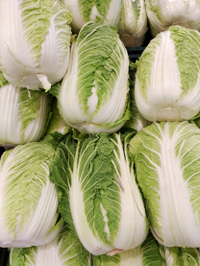
Photo from wikipedia
Abstract Continuous cropping obstacles, a replanting problem during celery production, is mainly due to Fusarium yellows caused by Fusarium oxysporum f.sp. apii (Foa), but allelopathy could worsen the situation. To… Click to show full abstract
Abstract Continuous cropping obstacles, a replanting problem during celery production, is mainly due to Fusarium yellows caused by Fusarium oxysporum f.sp. apii (Foa), but allelopathy could worsen the situation. To solve this problem in Taiwan, we examined AB2 and AB78 because of their strong inhibition of Foa hyphal growth (inhibition rates were 42 ± 3.46% and 50 ± 0%, respectively) and PdB5-1 because of its ability to quickly degrade gallic acid, the key allelochemical in celery (degradation initiated at 10 h post-inoculation). PdB5-1 can degrade 250 ppm gallic acid and also approximately 8% phenolic compounds in celery root water extract (RWE) within 20 h. In addition, application of PdB5-1 reduced the inhibitory effect of gallic acid or RWE on germination and radicle growth of celery seeds. In a greenhouse assay, mixtures of AB2, AB78 and PdB5-1 showed consistent performance in reducing disease severity of Fusarium wilt of celery (30%~90% reduction) in all three experimental schemes. Taking together, AB2, AB78 and PdB5-1 have high potential to be developed into biocontrol agents alone or in combination for Fusarium yellows of celery.
Journal Title: Biological Control
Year Published: 2020
Link to full text (if available)
Share on Social Media: Sign Up to like & get
recommendations!